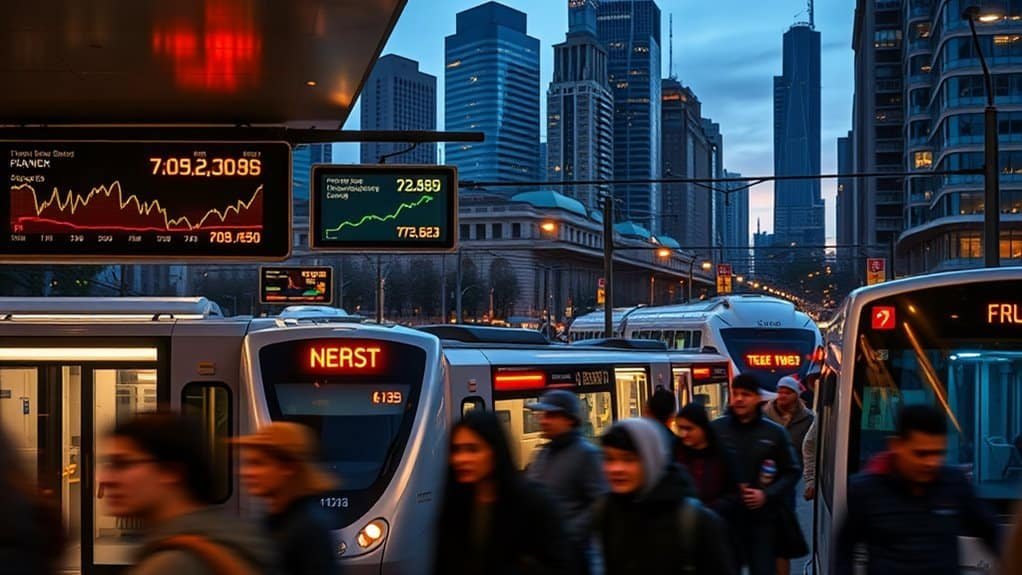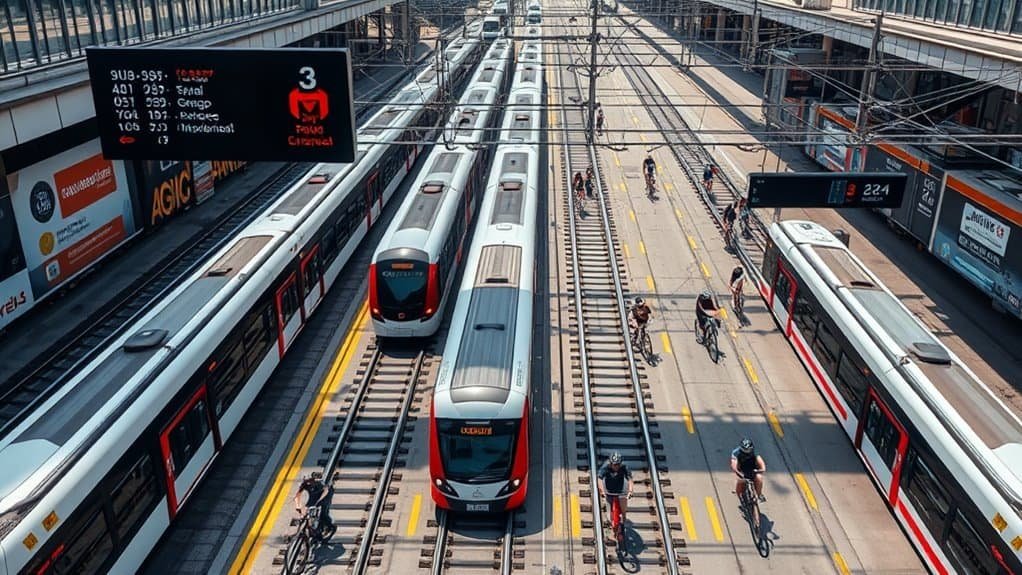Monthly Transit Forecasts: What to Expect?

Monthly transit forecasts indicate that employment rates, seasonal trends, and travel patterns influence ridership. Rising gas prices may boost public transport use, while ridership typically dips in winter and rises in spring and summer.
Anticipate service upgrades that enhance routes and schedules for a smoother travel experience. Stay alert for potential disruptions due to maintenance or weather, and adapt accordingly for optimal transit experiences.
Key Economic Indicators Impacting Transit Ridership

Key economic indicators significantly impact transit ridership.
Employment rates affect public transport reliance; more jobs typically lead to increased ridership due to workers seeking convenient travel.
High gas prices can drive people towards using transit.
Monitoring local economic health, such as income levels and consumer spending, is crucial for predicting ridership trends.
Understanding these indicators helps you make informed transit choices and adapt to changes effectively.
Seasonal Trends in Public Transportation
Seasonal trends significantly affect public transportation usage.
In winter, ridership typically drops due to cold weather but increases with holiday travel.
Spring brings more commuters and tourists as temperatures rise.
Summer sees peak ridership with vacationers exploring new places.
In fall, student returns boost usage, particularly in urban areas.
Anticipated Service Changes and Upgrades

Expect exciting public transportation upgrades soon, including new routes for better neighborhood connections and enhanced schedules for more frequent service.
Look out for upgraded vehicles with improved accessibility and comfort.
Use real-time tracking apps for efficient trip planning.
These changes aim to make commuting smoother and more enjoyable, encouraging city exploration.
Potential Disruptions to Transit Services
Stay informed about potential transit disruptions during upcoming upgrades to plan your commute better.
Watch for:
- Scheduled Maintenance: Temporary route closures.
- Weather Conditions: Delays or cancellations due to severe weather.
- Construction Projects: Impacts on accessibility and timing.
- System Testing: Temporary disruptions from new system tests.
Staying updated will help you navigate these challenges smoothly.
Evolving Travel Patterns and Commuter Behavior

With shifting lifestyles and work environments, it’s crucial to understand how these changes impact your daily commute.
Remote work is causing peak travel times to change, leading to lighter traffic during traditional rush hours and more off-peak travel options.
Public transit systems are adapting with varied schedules.
Embrace these changes by exploring alternative routes or times that suit you.
Staying informed about evolving services can make your commute smoother and more confident.
Strategies for Navigating Transit Options
Navigating transit options can be daunting, but you can simplify your travel by:
- Researching: Use apps or websites to compare routes and prices.
- Planning Ahead: Check schedules and travel during off-peak hours.
- Mixing Modes: Combine walking, biking, and public transport for flexibility.
- Staying Updated: Monitor transit alerts to avoid surprises.
Frequently Asked Questions
How Are Transit Fares Determined Each Month?
Transit fares are determined by evaluating factors like operational costs, demand, and budgetary needs. You’ll see adjustments based on economic conditions, funding changes, and service improvements, ensuring the system remains sustainable and efficient for everyone.
What Role Do Weather Conditions Play in Transit Usage?
Weather conditions greatly influence your transit choices. When it’s sunny, you might prefer walking or biking, while rain or snow drives you to use public transport. Extreme weather can also lead to service disruptions, affecting your commute.
Are There Discounts for Low-Income Riders?
Yes, many transit systems offer discounts for low-income riders. You should check your local transit authority’s website or contact them directly to find specific programs, eligibility requirements, and how to apply for those discounts.
How Can I File a Complaint About Transit Services?
To file a complaint about transit services, you can contact the customer service hotline or visit their website. They’ll guide you through the process, ensuring your concerns are addressed quickly and efficiently.
What Are the Most Common Reasons for Transit Delays?
Transit delays often happen due to mechanical failures, weather conditions, accidents, and staffing shortages. You might also experience delays from increased ridership or construction work affecting routes, so staying informed can help you plan better.
Conclusion
Stay informed about key indicators and seasonal trends to confidently adjust your travel plans. Embrace service changes as opportunities to explore new routes or schedules.
Understanding evolving commuter behaviors can make your journey smoother. Keep an eye on the road ahead and let your transit experience lead you to new adventures.
